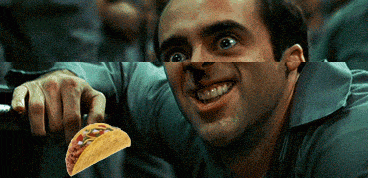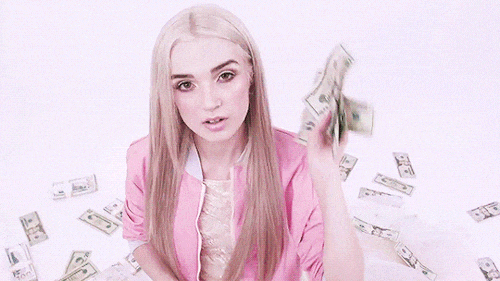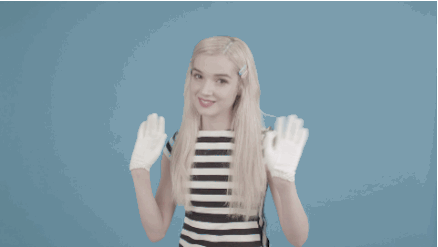THE BIZARRE, SURREAL WORLD OF THAT POPPY
Celebrity, Pop Star, Personality, Brand, the enigmatic digital persona That Poppy embodies each, in their turn, like a living simulacrum of the Infosphere.
The Internet is a weird place, that is not a newsflash. Our computers and phones serve as a portico to the Collective Unconscious - home of our deepest, dearest wishes; our darkest fantasies; our kinkiest eroticism; and our nonsensical dream logic. Where else can you find images of brutal beheadings queued immediately after adorable puppies; Taylor Swift covers; Azealia Banks practicing witchcraft in a dirty closet or having yet another meltdown on a plane; alt-right Fortean conspiracy theories; fashion advice and tutorials; and obscure ‘60s sci-fi rubbing shoulders, bleeding into one another like a particularly strange Salvador Dali canvas?

The Internet is a strange place, and we are all stranger people for it. Over half of the Earth’s population, or 3.77 billion people, are online, at this point, with millions and millions remaining logged in around-the-clock via smartphones and smart devices. Tweets, Snaps, Instagram posts, Facebook updates swarm the air around us like some hyperreal Goya painting, while thought pieces and personal reflections - both expert and amateur - gather on blogs, message boards, and YouTube. We are rich in information, but short on wisdom, to paraphrase the Dalai Lama.
Now imagine that the Internet was personified, inhabiting the body of a small, cute, kawaii-as-hell Internet Personality. That personality is That Poppy.

Rising from a background as a YouTube personality, That Poppy has emerged as a brilliant art statement, both parodying and ruling Pop Culture. Working with musician Titanic Sinclair, Poppy issues stacks of short YouTube clips, weighing in on everything from Q-Tips to puppies, (“doges”, as she refers to them). Alongside the more typical blogpost/personal review-style video, which most of us are familiar with from our Celebrities - Poppy issues abstract, narrative-less vignettes, like Vines from some astral waiting room - like the short video “Oh No”, where Poppy confronts a digital doppelganger, dripping black ooze and ichor from her smiling lips. If David Lynch’s saccharine parodies - Twin Peaks, Mulhulland Dr., Rabbits - were to meet David Firth’s iconic Internet sensation Salad Fingers and the darkly beloved fat-pie.com, to score an ASMR video, it might look (and sound) a lot like Poppy’s videos with Titanic Sinclair.
OH NO
“Oh No” is just one example of a vast digital continent of obscure, surreal, slightly sinister, often hilarious, occasionally moving or thought-provoking videos posted to Poppy’s YouTube channel.
Some other highlights include “A Plant,” where Poppy interviews a potted plant, who speaks with a voice like a Dalek, answering Poppy’s questions with surprisingly deep answers, such as “It hurts when you eat us. You just can’t hear us scream,” or “Sometimes I wake up feeling ready to take on the world. Other days I feel like the life has been sucked right out of me.” This potted plant sounds more sane and more real than a lot of ‘humans’ spouting off across the Internet.
A PLANT
She even responds to accusations of cult membership, over sacred holy music, while getting her followers to repeat back brainwashing slogans, “I am not in a cult,” on a video of the same name.
I AM NOT A CULT
You can also watch Poppy eat cotton candy, load a gun, comment on how boring Thursdays are, and much more lunacy, across an epic playlist consisting of 184 videos.
Poppy presents herself as a kind of plasticine digital kewpie doll, somewhere between the artful tableaux of St. Vincent, the lo-fi experimentalism of early Grimes, and the shiny, happy neon spectacle of early ‘80s Pop Stars like Madonna or Cyndi Lauper. Tellingly, Poppy rarely looks directly at the camera, instead staring off into some eternal, ephemeral digital infinity, delivering existential diatribes in high, chirpy, positive tones. It’s both a reflection and commentary on the ASMR phenomena, standing for ‘autonomous sensory meridian response,’ where our nervous system respond automatically to certain stimuli. It’s where the reptile brain of our ancient nature meets the third eye futurism of the pineal gland.
Like most of Poppy’s art and commentary, it’s mostly hilarious, frequently interesting, always stylish, and kind of sad. What could be more bleak than humans sitting up at 4 am, washed out in the cool radiance of their cellphones, desperately seeking intimacy so hard they’re watching videos of strangers whispering in their ears? Like a cat with a laser pointer, Poppy’s music and art message reminds us the digital will never replace the real, or the necessity for true, raw, honest human connection. Google may be able to provide answers for almost anything, at this point, but ask Siri “What’s wrong with my life?” or “How can I feel better?” and prepare to hear the crickets, like night time in Castlevania.

Poppy may be the most 21st Century Pop Star we’ve had so far, considering we now have holograms of dead rappers headlining Coachella, while Hatsunu Miku leads legions of Japanese pre-teens in epic, synchronized DDR spectacles, despite the fact that she doesn’t exist, in a real-world ontological sense, that is. Many have wondered the same thing about That Poppy, including a feature for Vice’s Noisey channel, who describe Poppy’s multimedia empire as “Warhol's Screen Tests reinterpreted for a generation raised on Tumblr and Vaporwave, and combined, they have amassed views that run into the multi-millions.”
That Poppy didn’t stop at being just an Internet phenomenon, which is part of what makes her art project so successful. Poppy also makes music - a blend of J-pop/k-pop with futuristic beats and sound design, as can be heard on one of her most recent singles, “I’m Poppy.”
I’M POPPY
“I’m Poppy” is a synchronized DDR dance off taking place in Mario’s Warp World, with familiar 8-bit FX ricocheting like shurikens in Ninja Gaiden, while Poppy’s detuned, detoured, hyper-pitched vocals, delivering simple, repeatable soundbytes. Poppy’s music is not just art project or critique, however - it actually SOUNDS good, sanding off some of the abrasive edges of traditional J-Pop/K-Pop and underground antecedents, like the productions of PC Worship or the digital grotesquerie/grandiosity of Oneohtrix Point Never/Daniel Lopatin.
“Lowlife,” another early breakout single, is less conceptual and more straight pop, sounding like the digital dancehall of Drake’s ‘Work’ getting together with early No Doubt. Poppy’s white reggae sounds more believable and authentic than Steffani’s brand of rocksteady, tellingly, even though some aren’t even convinced Poppy’s a real person.
Real or not, That Poppy may be the best representation of how we really live, breathe, and think in 2017. Part brand, part brand ambassador; partly sincere, partly taking-the-piss. Bright cotton candy colors conceal hidden depths, pain, and darkness. The bleakness gives way to hope so seamlessly, however, it's like clouds moving across the sun. Nothing lasts forever, except The Internet, and we are left, staring off into the distance - contemplating everything, contemplating nothing.

J. Simpson occupies the intersection between criticism, creativity, and academia. Based out of Portland, Or., he is the author of Forestpunk, an online journal/brand studying the traces of horror, supernatural, and the occult through music, fashion and culture. He plays in the dreamfolk band Meta-Pinnacle with his partner Lily H. Valentine, with whom he also co-founded Bitstar Productions, a visual arts collective focused on elevating Pop Culture to High Art.


